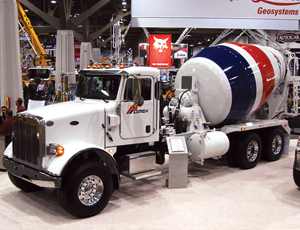While cement remains the most widely used building material in the world, its ubiquity has proven to be a blessing and a curse for large cement companies. Stalled construction worldwide has spurred a dramatic slump in sales for the three largest cement manufacturers, Cemex, Lafarge and Holcim, whose acquisition debt has just made financial matters even worse.

With prospects dour for 2009—Cemex expects demand to drop 15% in the U.S. this year—the pressure on the firms’ bottom lines has only increased. For Mexico-based Cemex and France’s Lafarge, massive acquisitions made during the height of the boom are weighing heavily on the balance sheet.
In 2007, Cemex spent $14.2 billion to purchase Australian cement-maker Rinker Group Ltd., and last year Lafarge shelled out $12.8 billion to acquire Egypt-based Orascom Construction Industries. Both firms now admit the purchases were made with growth in mind but were taken by surprise by the rapid erosion of the global financial situation.
"We knew we were in a down cycle when we purchased Rinker," says Cemex Chief Financial Officer Rodrigo Trevino. "But nobody anticipated the magnitude of the downturn we have seen." Lafarge, the world’s largest cement maker, made the debt-financed acquisition of Orascom with an eye on the then-booming Middle East market. "We know we are suffering from the negative perception of the market about our level of debt," says Lafarge Chairman and CEO Bruno Lafont. "We must now adapt to strengthen our financial structure."
Their options remain slim in the depressed market. Lafarge was hammered with an 89% drop in fourth-quarter net profit, pulling in just $51 million in the last three months of 2008. Likewise, Cemex expects operating cash flow to decline 19% in 2009, to about $2 billion. Both companies have announced strategic plans that emphasize liquidity through a barrage of sell-offs, cutbacks and financial retrenchment. Cost-cutting at both firms has already led to layoffs, plant closings and, in the case of Lafarge, a halving of dividend payments. Cutbacks at Cemex also led to the firm’s conspicuous absence at the annual World of Concrete show last month.
On Feb. 4, Cemex announced a plan to reduce the company’s debt load by $3.6 billion this year, partially in anticipation of refinancing approximately $3 billion in debt due in 2010 to the Rinker purchase. That was paralleled by Lafarge’s Feb. 20 unveiling of a $5.77-billion action plan that includes $4.48 billion in debt reduction in 2009. Cemex officials say they plan to sell between $1.7 billion and $1.9 billion in assets this year in order to meet the company’s financial objectives. "Our focus is to reduce debt, and so we want cash," says Juan Pablo San Agustn, Cemex’s senior vice president of corporate strategic planning. "No swaps. Only sells."
Holcim, the world’s second largest cement maker, also has been stung by the downturn but not as sharply as its two rivals. In November, the Swiss company announced a 23% drop in third-quarter income that required drastic paring down of operations. Two U.S. cement plants, one in Clarksville, Mo., and another in Dundee, Mich., were shuttered, and more than 1,500 workers were laid off. Work continues on a $905-million plant in Ste. Genevieve County, Mo., slated to produce 4 million tonnes of cement annually when completed later this year.
As the year unfolds, large cement makers are stuck in a precarious situation. Cemex says prices are not likely to fall this year due to the high cost of raw materials. And then there is federal stimulus spending. Cemex’s projections for 2009 do not include it, while Lafarge says it expects to see little or no payback this year. Still, officials of both companies think the measure will ensure their survival and place them in a good position when the market rebounds. "Although the sector is in the midst of a cyclical downturn, this is not a structural crisis," says Lafont. "The world will continue to need cement and concrete in the years to come."



Post a comment to this article
Report Abusive Comment